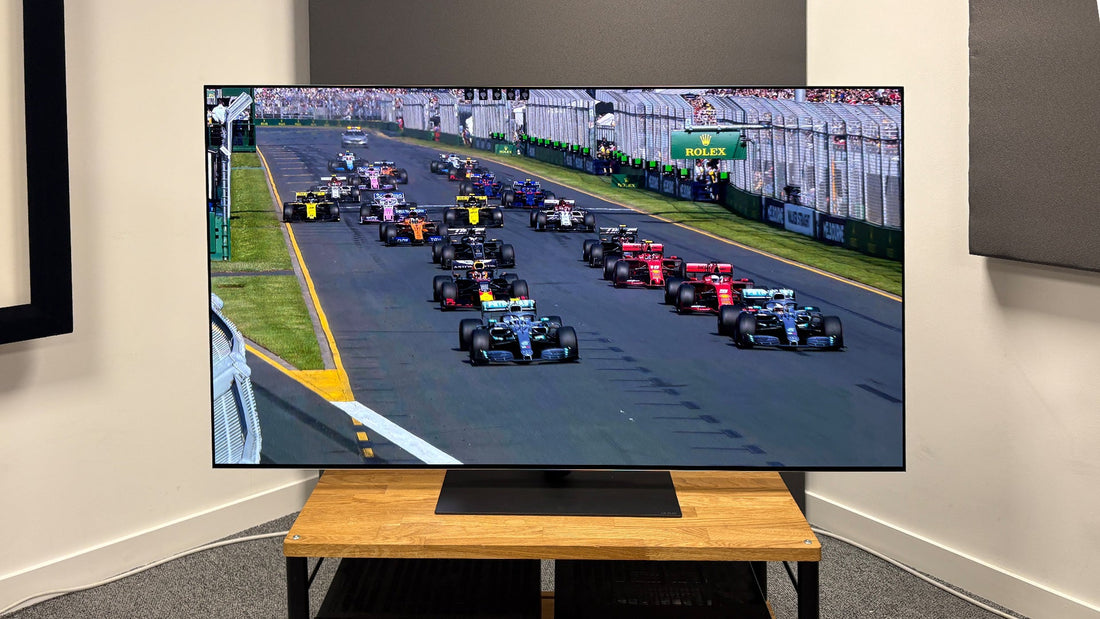
Mini-LED vs OLED: Which Brands Are Doing It Best in 2025?
Share
When it comes to buying a premium TV in 2025, the debate still rages on: Mini-LED or OLED? Both technologies have matured, and both offer stunning performance—but they’re not created equal. Depending on what you watch, how you game, and even what room you watch in, one may suit you better than the other.
And more importantly: which brands are actually doing it best this year? Let’s break it all down.
Mini-LED vs OLED: The Basics
Mini-LED: Brighter, Better Backlighting
Mini-LED is an evolution of traditional LED-LCD tech. It uses thousands of tiny LEDs for more precise local dimming, higher brightness, and better contrast. It’s ideal for bright rooms, and its burn-in resistance makes it perfect for static content and gaming UIs.
OLED: Pixel-Level Perfection
OLED panels light up each pixel individually. That means perfect blacks, infinite contrast, and unmatched uniformity. OLEDs are typically better in dark rooms and offer superb viewing angles. But they’re more expensive, and while burn-in risks are lower than before, they still exist.
Mini-LED: Who’s Doing It Best in 2025?
🥇 Hisense – UX Series & U8N
Hisense’s 2025 Mini-LED lineup punches way above its price point. The UX series boasts:
-
Over 10,000 dimming zones
-
Peak brightness over 3,000 nits
-
Quantum Dot color with 95%+ Rec.2020 coverage
They’ve mastered contrast control, and their ULED X platform is a serious alternative to the best from LG or Samsung.
🥈 Samsung – Neo QLED QN90D/QN95D
Samsung was early to the Mini-LED race, and their 2025 Neo QLEDs are among the best.
-
Adaptive HDR mapping
-
Anti-reflective screen coating
-
Excellent motion processing
Samsung also blends in high-end gaming features like 144Hz refresh rates, VRR, and ALLM, making these TVs great for gamers and sports fans.
🥉 TCL – QM8 Series
TCL remains the budget performance leader. The 2025 QM8 packs:
-
Mini-LED with thousands of zones
-
2,000+ nit brightness
-
120Hz native panel
For under $1,000 in some sizes, you get flagship-tier contrast and brightness—perfect for value hunters.
OLED: Who’s Winning in 2025?
🥇 LG – OLED evo G5 & C5 Series
LG continues to set the OLED bar. The G5 (Gallery Series) offers:
-
Micro Lens Array (MLA) for up to 70% more brightness
-
Dolby Vision Gaming at 120Hz
-
Near-zero input lag
With 77", 83", and even 97" options, LG remains the OLED king.
🥈 Sony – A95L QD-OLED
Sony’s premium QD-OLED combines OLED’s perfect blacks with QLED’s vibrant color. In 2025, they’ve refined:
-
Cognitive XR processing for jaw-dropping image realism
-
PS5-specific features like Auto HDR Tone Mapping
-
Incredible motion handling and cinematic accuracy
It’s pricey—but it's also the best for movie buffs and PlayStation fans.
🥉 Samsung – S95D QD-OLED
Samsung’s third-gen QD-OLED combines:
-
Quantum color brightness
-
Ultra-low reflectivity (great in ambient light)
-
144Hz refresh rate for PC and next-gen console gaming
Their S95D now rivals LG in both HDR brightness and color pop—without OLED’s traditional dim-room limitations.
Mini-LED vs OLED: Quick Comparison (2025)
| Feature | Mini-LED (Best) | OLED (Best) |
|---|---|---|
| Brightness | 🏆 Hisense UX | LG G5 (w/ MLA) |
| Black Levels | Samsung Neo QLED | 🏆 Sony A95L |
| Gaming Features | Hisense U8N, TCL QM8 | 🏆 LG C5, Samsung S95D |
| Color Accuracy | Samsung Neo QLED | 🏆 Sony A95L, S95D |
| Value for Money | 🏆 TCL QM8, Hisense U7N | LG C4 or TCL QD-Mini |
| Viewing Angles | Decent | 🏆 All OLEDs |
| Burn-in Risk | None | Low (but possible) |
Final Verdict: Which Should You Choose?
-
Go Mini-LED if:
You game a lot, watch in bright rooms, or want a big screen at a lower price. -
Go OLED if:
You want perfect black levels, watch movies in a dim room, or prioritize color precision and pixel-level lighting.
And if you’re after the best of both worlds? Samsung’s QD-OLED and Sony’s A95L are bridging that gap beautifully.
